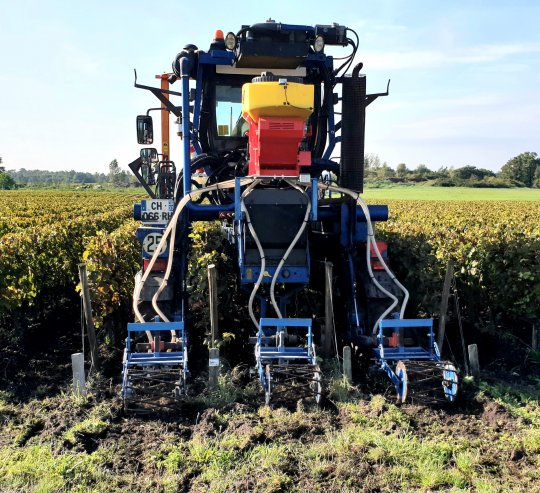How to properly maintain a grass cover?
How to manage plant height?
Plant height should be managed to avoid the risk of spring frosts and/or the growth of fungi, which, in humid microclimates, encourage cryptogamic disease outbreaks. To do this, the plants can be either mowed or rolled. While mowing cuts the plants, rollers flatten the cover crop by constricting the sap flow. With the flow of sap restricted, competition for water between the vine and the grass cover is limited, unlike mowing. Rollers can be used on lignified plants or species with hollow stems. Several types of rollers exist and are chosen for their specific characteristics.
See section on Green Manure
What is the best or worst time to mow?
Mowing is generally done towards winter's end though before budburst to limit spring frost risks.
The mowing frequency will depend in part on the plant cover's growth rate. It will also depend on the weather conditions, especially if the spring is wet and cold. In general, 3 to 4 mowing sessions are necessary to correctly maintain the grass cover.
Several tools mounted on agricultural machines can be used to mow grass, such as hammer mills or vertical shaft mowers. Inter-cep mowers are used to mow between the vines.
New robotic tools are being developed specifically for vineyard mowing. They consist of small autonomous robots that move around the vineyard to mow the inter-row and/or between the vines.

